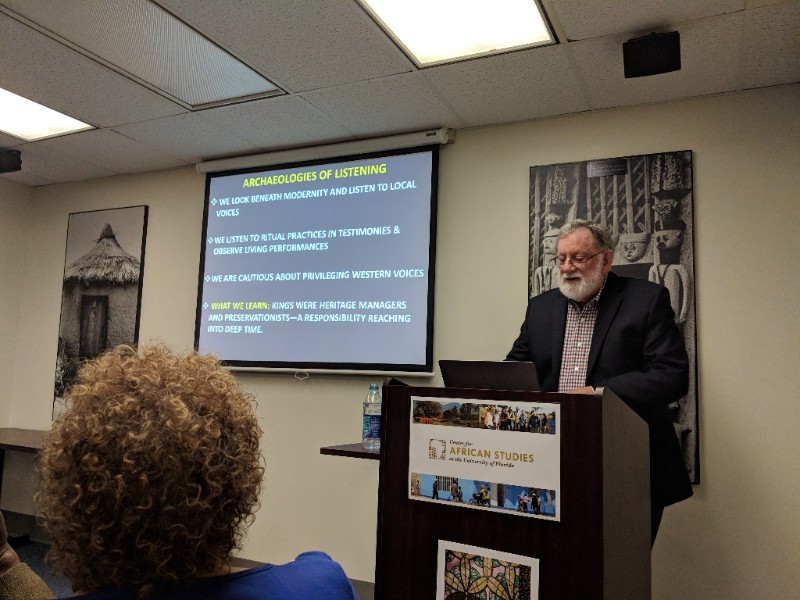On January 26, Peter Schmidt (University of Florida) gave a presentation titled, “What is Community Archaeology? Reclaiming the Past in Africa to Remake the Future.” The lecture focused on three community archaeology projects in Northern Tanzania.

The first project focused on the Kaiija Shrine Tree or “Place of the Forge,” a sacred shrine dedicated to iron working. Community members pushed for excavation at this site based on interest in local oral traditions, which associated the site with the Iron Tower myth. Following the excavation, the community became increasingly engaged with the site, its history, and the community’s identity. In 2008, Dr. Schmidt returned to the area and found that Kaiija Shrine Tree had been killed in an agricultural dispute. Community discussions with Dr. Schmidt resulted in a renewal of interest in community archaeology, sparking the formation of a committee interested in preserving the community’s heritage. The committee worked together to document living oral traditions, record information about sacred places and rituals, and teach youth about these traditions and histories. Dr. Schmidt also talked about community restoration projects at Buchwankwanzi House and Kanazi Palace. Both sites were important locations relating to the history of the region’s royal families. Excavations at Kanazi Palace uncovered ritual objects and objects of modernity—evoking a discussion about the impact of colonial intervention in Tanzanian politics and culture.
Dr. Schmidt finished his lecture by discussing a community archaeology project at Mazinga Cave, where local children had uncovered human bones during a class project. Through oral history and excavation data, this project determined that bodies found at the site were killed in the Ngogo Massacre. The Massacre resulted in 400 people being killed by German soldiers. Oral tradition dictated that bodies killed in battle cannot be buried, which is why it is believed that they were put in the Mazinga Cave. This project resulted in an exhibit being constructed at the children’s school, which was dedicated to the history of Mazinga Cave and the Ngogo Massacre.
In the future, Dr. Schmidt, collaborating scholars, and community members in Tanzania will work to converge these sites through the Kagera Heritage Museum.
